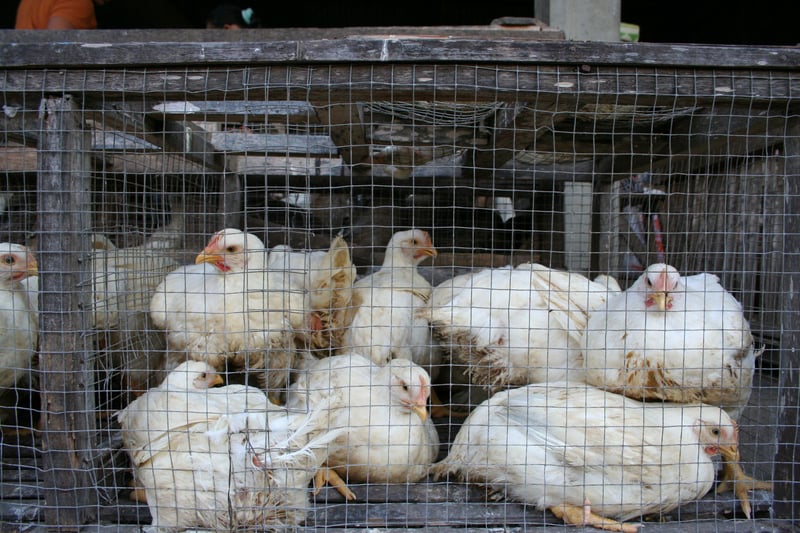
More chickens are farmed for their meat than any other animal and the scale of their suffering is tremendous.
Around 2,000 meat chickens, also known as broilers, are slaughtered every second. Boiled, roasted, fried, grilled, chopped and puréed - chickens appear both obviously and invisibly in food.
The world consumes 60 billion chickens every year. Most of them, nearly 40 billion, are farmed industrially.
“I think it’s the biggest animal protection problem we face today,” said Jonty Whittleton, World Animal Protection’s International Head of Campaigns for Animals in Farming. “The number of chickens involved is just breathtaking; the challenges and suffering they face are enormous.”
It’s common for tens of thousands of birds to be farmed together in enormous sheds where there is no natural light and little fresh air. They live crowded together, in spaces far too close for comfort.
This is not an environment where they can behave naturally. They can’t dustbathe or perch - activities chickens instinctively want and try to do, no matter where they are kept.
Growth Issues
Their farmed life starts when they are 1-day-old chicks. The way they have been bred means they often grow up to 2 times as fast as traditional breeds.
Here are some of the staggering growth numbers:
- EU intensively reared chickens are expected reach 5.5 pounds in 42 days.
- US intensively reared chickens are expected to reach 5.7 pounds in 47 days.
- Brazilian intensively reared chickens are expected to reach 5.5 pounds in 39-41 days.
A slower growing, less intensively reared bird could take up to 56 days to reach a similar weight.
The way broiler chickens are kept and their extreme growth rate causes 3 serious welfare problems:
Weak bones. These are caused by the chickens growing too quickly and the barren environments in industrial sheds, which discourage activity. They lead to painful lameness and skeletal disorders as the chickens’ bodies get heavier and heavier.
Overworked hearts and lungs. These are caused by the rapid weight gain and can kill the chickens suddenly.
Wounds, sores, and burns. These are the result of too many chickens being kept in one place, when the chickens can’t move around enough, and when the sheds’ litter-lined floors are not cleaned and managed properly. The birds lie down in the wet, ammonia-soaked shed litter which then irritates and burns into their skin.
You can help
Your voice is key to improving the lives of chickens around the world. Together, we can influence global food companies, iconic fast-food brands, and supermarkets. As food consumers, we need to put pressure on retailers, demanding that the animals in their supply chains are given better lives.
Consumers worldwide have already shown their power by making governments, retailers, and farmers improve conditions for egg-laying hens. We know the same can be done for broiler chickens too.
Tell your friends, colleagues and families about the terrible suffering that industrially farmed chickens endure. Encourage them to read labels on chicken and chicken products carefully and not be fooled by healthy sounding words like ‘farm fresh.’
Ask them to tell retailers to stock meat from chickens reared more humanely; this means environments where chickens are not forced to grow so quickly, where they have natural light and where they can move around more freely.